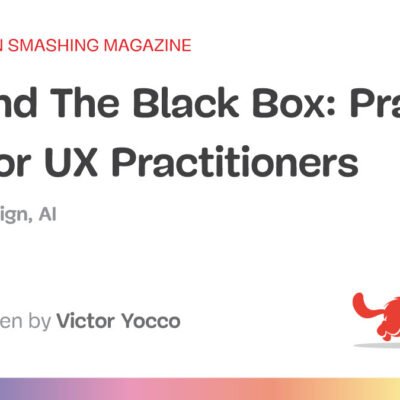Innovation is not just a buzzword, it’s a critical driver of growth and competitive advantage. Understanding and implementing the right innovation frameworks can help organizations navigate complexities, identify opportunities, and deliver value effectively.
At ISHIR, we specialize in guiding businesses through the innovation process, ensuring clarity, alignment, and accelerated outcomes.
In this comprehensive guide, we delve into 17 pivotal innovation frameworks that every business leader should be familiar with in 2025.
1. Disruptive Innovation Model
Overview:
Introduced by Clayton Christensen, the Disruptive Innovation Model explains how smaller companies with fewer resources can successfully challenge established businesses by targeting overlooked segments or creating new markets. These disruptors often start by offering simpler, more affordable solutions and gradually move upmarket, displacing incumbents.
Ideal For:
Startups and new entrants aiming to penetrate markets dominated by established players.
Benefits:
- Identifies opportunities in underserved or ignored market segments.
- Facilitates the development of cost-effective solutions that can scale.
- Encourages agility and adaptability in responding to market needs.
2. Open Innovation Model
Overview:
Coined by Henry Chesbrough, Open Innovation refers to the practice of organizations leveraging external ideas, technologies, and paths to market alongside internal efforts. This approach breaks down traditional silos, encouraging collaboration with external partners, universities, and even competitors to co-create value.
Ideal For:
Organizations seeking to expand their innovation capabilities beyond internal resources.
Benefits:
- Accelerates the innovation process by incorporating diverse perspectives.
- Reduces R&D costs through shared resources and knowledge.
- Enhances competitive advantage by integrating cutting-edge external innovations.
3. Innovation Funnel Model
Overview:
The Innovation Funnel is a structured process that guides organizations from a broad set of ideas to a refined selection of viable innovations. It involves stages of idea generation, screening, development, and implementation, ensuring that only the most promising concepts are pursued.
Ideal For:
Companies with a high volume of ideas needing a systematic evaluation process.
Benefits:
- Provides a clear pathway from ideation to market launch.
- Enhances resource allocation by focusing on high-potential projects.
- Reduces the risk of pursuing unfeasible or low-impact ideas.
4. Blue Ocean Strategy
Overview:
Developed by W. Chan Kim and Renée Mauborgne, Blue Ocean Strategy emphasizes creating new, uncontested market spaces—termed “blue oceans”—rather than competing in saturated markets. This approach focuses on value innovation, simultaneously pursuing differentiation and low cost.
Ideal For:
Businesses aiming to break away from intense competition and create unique market opportunities.
Benefits:
- Opens up new demand and reduces competition.
- Encourages innovative thinking and differentiation.
- Aligns innovation efforts with cost-effectiveness.
5. Lean Startup Methodology
Overview:
Popularized by Eric Ries, the Lean Startup Methodology advocates for a build-measure-learn approach. It emphasizes creating a Minimum Viable Product (MVP) to test hypotheses quickly and iterating based on real customer feedback, thereby reducing time and resources spent on unproven ideas.
Ideal For:
Entrepreneurs and startups developing new products in uncertain markets.
Benefits:
- Speeds up product development cycles.
- Minimizes waste by focusing on validated learning.
- Enhances responsiveness to customer needs and market changes.
6. Stage-Gate Process
Overview:
The Stage-Gate Process, developed by Dr. Robert G. Cooper, divides the innovation journey into distinct stages separated by decision points, known as gates. At each gate, projects are evaluated, and decisions are made whether to proceed, pivot, or halt, ensuring rigorous assessment throughout the development process.
Ideal For:
Organizations managing complex projects requiring structured oversight.
Benefits:
- Provides a clear framework for project progression.
- Facilitates risk management through continuous evaluation.
- Enhances cross-functional collaboration and accountability.
7. Design Thinking
Overview:
Design Thinking is a human-centered approach to innovation that integrates the needs of people, the possibilities of technology, and the requirements for business success. It involves five phases: Empathize, Define, Ideate, Prototype, and Test, fostering creativity and user-centric solutions.
Ideal For:
Teams focused on developing solutions that deeply resonate with users.
Benefits:
- Encourages empathy and a deep understanding of user needs.
- Promotes iterative prototyping and testing.
- Leads to innovative solutions that are desirable.
8. Double Diamond Framework
Overview:
The Double Diamond is a visual representation of the design and innovation process, introduced by the UK Design Council. It comprises four phases: Discover, Define, Develop, and Deliver. The framework emphasizes divergent thinking (exploring many possibilities) followed by convergent thinking (narrowing down to the best solutions) in two cycles, hence the “double diamond.”
Ideal For:
Design and innovation teams seeking a structured approach to problem-solving and solution development.
Benefits:
- Encourages thorough exploration of problems and solutions.
- Facilitates collaboration and user-centered design.
- Provides a clear roadmap from problem identification to solution implementation.
9. Three Horizons Framework
Overview:
Developed by McKinsey, the Three Horizons Framework assists organizations in balancing their focus between present and future opportunities. Horizon 1 focuses on core businesses, Horizon 2 on emerging opportunities, and Horizon 3 on visionary ideas and potential future growth areas.
Ideal For:
Organizations aiming to manage current performance while preparing for future growth.
Benefits:
- Helps allocate resources effectively across different timeframes.
- Encourages a balanced approach to innovation and operational efficiency.
- Facilitates strategic planning and long-term vision development.
10. Jobs-to-be-Done (JTBD) Framework
Overview:
The JTBD framework centers on understanding the underlying reasons customers “hire” a product or service to accomplish specific tasks or solve problems. By focusing on these jobs, companies can uncover unmet needs and innovate accordingly.
Ideal For:
Product development and marketing teams seeking deep insights into customer motivations.
Benefits:
- Provides a customer-centric approach to innovation.
- Reveals opportunities for product or service enhancements.
- Helps in crafting compelling value propositions aligned with customer needs.
11. Oslo Manual Framework
Overview:
The Oslo Manual, published by the OECD, offers guidelines for collecting and interpreting data on innovation. It provides standardized definitions and methodologies to measure innovation across different sectors and countries.
Ideal For:
Policy makers, researchers, and organizations involved in innovation measurement and analysis.
Benefits:
- Ensures consistency in innovation data collection and interpretation.
- Facilitates international comparisons of innovation performance.
- Supports evidence-based policy-making and strategic planning.
12. TRIZ (Theory of Inventive Problem Solving)
Overview:
TRIZ is a systematic methodology for solving complex problems and fostering innovation. Developed by Genrich Altshuller, it is based on the analysis of patterns in global patent literature to identify common principles of inventive solutions.
Ideal For:
Engineering and product development teams tackling technical challenges.
Benefits:
- Offers a structured approach to problem-solving and innovation.
- Utilizes a vast database of inventive principles and solutions.
- Enhances creativity by identifying and applying patterns from other industries.
13. Doblin’s Ten Types of Innovation
Overview:
Developed by Doblin, a global innovation firm, this framework categorizes innovation into ten distinct types across three categories: Configuration (internal focus), Offering (product or service), and Experience (customer-facing elements).
Ideal For:
Organizations seeking a comprehensive approach to identifying and implementing innovation opportunities.
Benefits:
- Encourages exploration of multiple dimensions of innovation beyond products.
- Helps identify areas of competitive advantage.
- Provides a holistic view of potential innovation strategies.
14. Ambidextrous Organization Model
Overview:
The Ambidextrous Organization Model describes an organization’s ability to balance exploitation of existing capabilities with exploration of new opportunities. This dual focus enables organizations to optimize current operations while innovating for the future.
Ideal For:
Large enterprises aiming to maintain operational efficiency while fostering innovation.
Benefits:
- Facilitates sustainable growth by balancing short-term performance with long-term innovation.
- Encourages organizational agility and adaptability.
- Supports the development of a culture that values both efficiency and innovation.
15. Business Model Canvas
Overview:
The Business Model Canvas is a strategic management tool that provides a visual framework for describing, analyzing, and designing business models. It encompasses nine building blocks: Customer Segments, Value Propositions, Channels, Customer Relationships, Revenue Streams, Key Resources, Key Activities, Key Partnerships, and Cost Structure.
Ideal For:
Entrepreneurs and organizations developing new business models or documenting existing ones.
Benefits:
- Offers a clear and concise visual representation of a business model.
- Facilitates understanding and communication of business ideas.
- Supports strategic planning and innovation by identifying key components and their interrelationships.
Continuing our exploration of pivotal innovation frameworks, we delve into the final two models that empower organizations to navigate complex challenges and drive transformative growth.
16. Stingray Model
Overview: Developed by the Board of Innovation, the Stingray Model is a contemporary framework that integrates generative artificial intelligence (GenAI) into the innovation and design process.
This model addresses the limitations of traditional frameworks by emphasizing speed, efficiency, and data-driven decision-making. It comprises three key phases:
1. Train: Setting deliberate goals and gathering intelligence. AI assists in synthesizing vast datasets to provide a clear starting point.
2. Develop: Simultaneously exploring problems and solutions. AI generates and categorizes ideas, creating a broad yet focused set of options.
3. Iterate: Rapidly testing and refining solutions. AI conducts simulations and evaluates real-world feasibility, enabling swift adjustments.
By leveraging AI, the Stingray Model accelerates the innovation process, reduces unnecessary steps, and enhances investment confidence.
Ideal For:
Organizations seeking to harness AI capabilities to streamline their innovation processes and tackle complex challenges more effectively.
Benefits:
- Enhanced Efficiency: Utilizes AI to process and analyze data rapidly, reducing the time required for problem identification and solution development.
- Improved Decision-Making: Data-driven insights lead to more informed and confident investment decisions.
- Adaptability: The model’s flexibility allows teams to pivot quickly in response to emerging trends and feedback.
17. First Principles Thinking
Overview:
First Principles Thinking is a problem-solving approach that involves deconstructing complex issues into their most fundamental elements and reassembling them from the ground up. This method encourages questioning existing assumptions and building solutions based on foundational truths rather than relying on analogy or conventional wisdom. Elon Musk, CEO of SpaceX and Tesla, is a notable proponent of this approach, applying it to innovate in industries ranging from aerospace to automotive.
Ideal For:
Individuals and organizations aiming to develop groundbreaking solutions by challenging existing paradigms and thinking creatively.
Benefits:
- Innovative Solutions: By focusing on fundamental truths, this approach fosters the development of novel and disruptive ideas.
- Cost Efficiency: Identifying and utilizing basic components can lead to more cost-effective solutions.
- Clarity: Breaking down complex problems into essential elements simplifies understanding and facilitates effective problem-solving.
Choosing the Right Innovation Framework to Fuel Your Growth
Understanding and implementing these 17 innovation frameworks can significantly enhance an organization’s ability to navigate the complexities of today’s business environment. Each model offers unique insights and methodologies tailored to different challenges and objectives. By selecting and adapting the appropriate framework, businesses can foster a culture of innovation, drive growth, and maintain a competitive edge in their respective industries.
At ISHIR, we specialize in guiding organizations through these frameworks, ensuring clarity, alignment, and accelerated outcomes in their innovation journeys. Whether you’re exploring new market opportunities, seeking to optimize existing processes, or aiming to disrupt the status quo, our expertise can help you navigate the path to success.
Empower Your Business with the Right Innovation Framework
Drive sustainable growth and stay ahead of the curve with ISHIR’s tailored innovation strategies.
The post 17 Innovation Frameworks Every Business Leader Should Know in 2025 appeared first on ISHIR | Software Development India.





